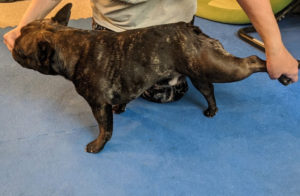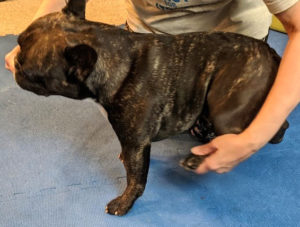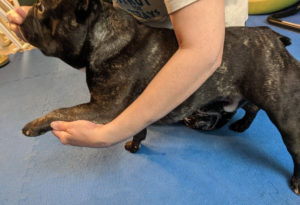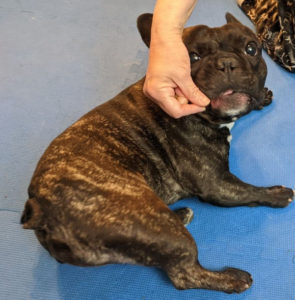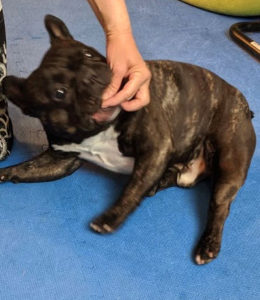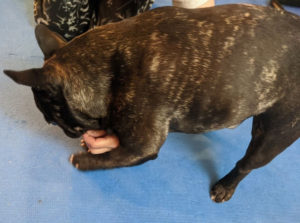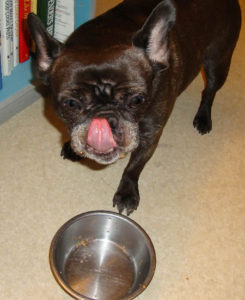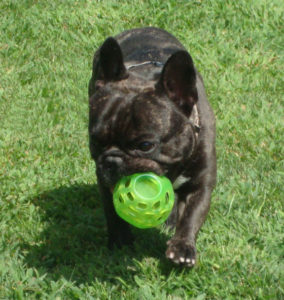Dogs are more stable than people. It’s just physics. They have support at each corner. An advantage of having four legs over two!
It doesn’t mean that they don’t have to practice balance – it just means it’s a bit easier for them than for us. One of Fran’s passions is helping people, especially as mature adults, to avoid falls by practicing balancing. From what we’ve learned, balance is an autonomic response that weakens with age. For everyone. People who practice their balance (as simple as standing on one leg for a minute), lose less.
We’ve seen the same effect in dogs, although we haven’t come across any studies to prove it. As our dogs age, they’re less stable when jumping, first waking up, going up stairs, etc.
Because we want our dogs to do “stuff” throughout their lives, we take a 2-Minute Session most days to practice balance. All of our dogs play on the balance disc, from 11-year-old Tango to 18 month-old Simon.
We use an inflatable balance disc, but a couch cushion, or any soft surface that’s big enough for your dog to stand on would be fine.
The first exercise we do is just “Sit” and “Stand.” About five times. We were astonished, when we started doing this with Tango, how difficult it was for him. He’s a very “bendy” dog, but didn’t have a lot of core strength. This works the dog’s core.
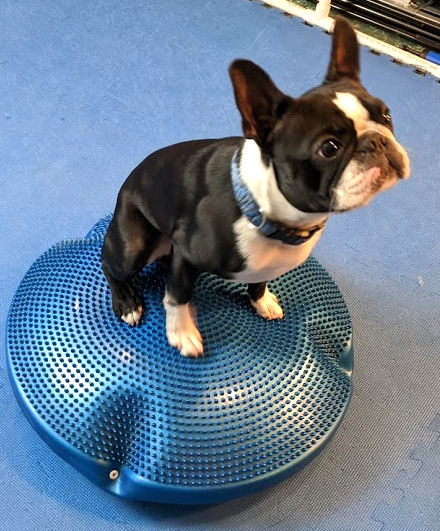
Simon sits on the balance disk 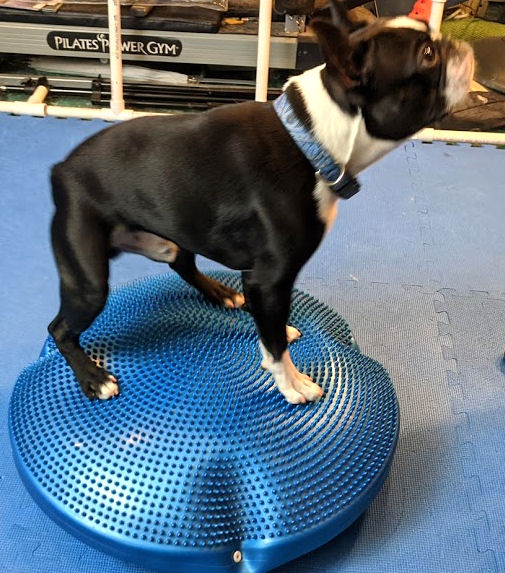
Simon standing – he’s working!
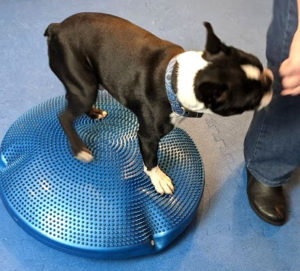
Next we ask them to turn around on the soft surface, first one direction, then the other. We go around with them and, in this case, lure them around in a circle at first. We’re not big fans of lures, but it’s sometimes the best way to get our dogs to understand what we’re asking of them.
Then we go around some more, first with only their front legs on the disc, then with the back. Again, we go around with them and teach them to move with the lure. We did clicker-train the positions of “front legs only” and “back legs only.” Teach your dog the positions before asking them to move that way.
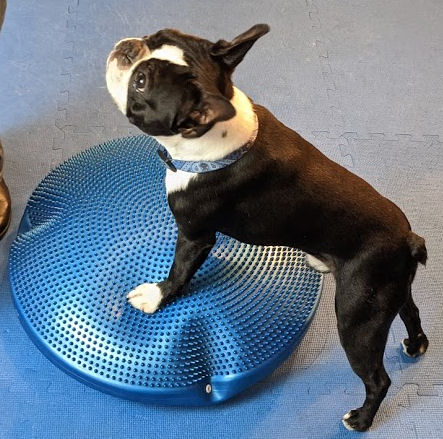
Simon walks around the disk – front legs on. 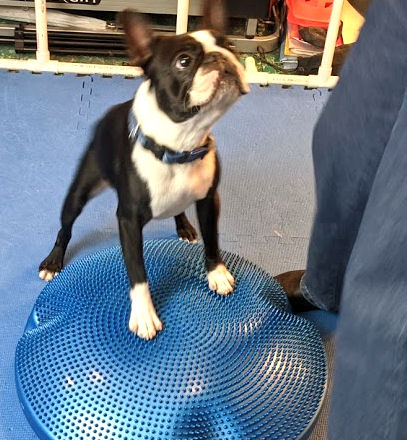
And Simon’s back legs on the disk.
When you start this, don’t rush it. Your dog may wobble quite a bit and need some time to find his/her center. As usual, reward for everything!
If your dog is having trouble with any part of any of these exercises, don’t do many repetitions. Just like us, if it’s been a while since our dogs have used a muscle in a particular way, they may be sore the next day and need some time to recover. Don’t wait to revisit the exercise, but ease off on the intensity until your dog is moving comfortably again. Build up slowly, and if your dog is reluctant to do something, pay attention. We want them to have fun doing their balance games, which they won’t if it’s too hard or causes discomfort.

